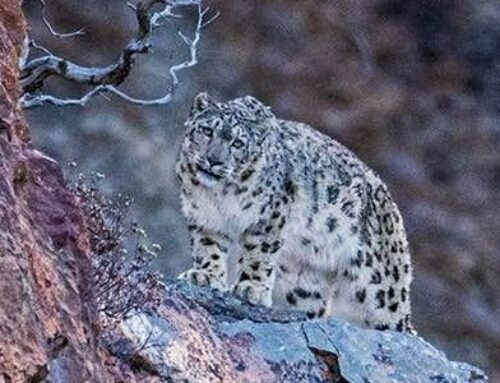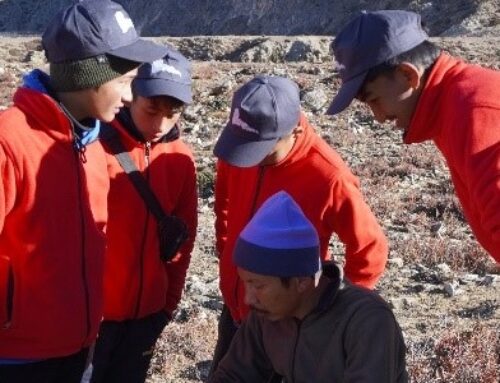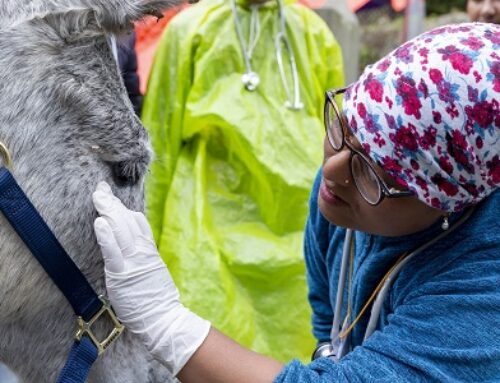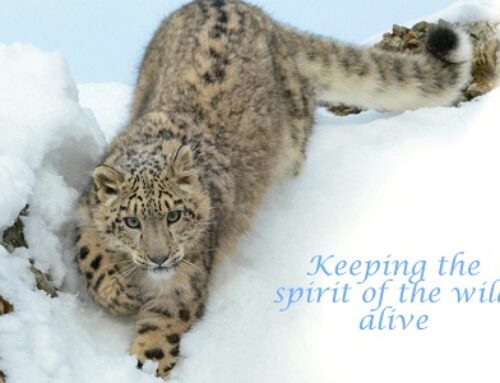Sleuthing for Snow Leopard Conservation through the DNA of Poop By Jan Janečka, Ph.D.
As the bitter wind bites the exposed flesh of my hands, I fumble with my GPS to get a location of the tracks we have just found. Despite my fatigue and the pain in my legs, and the burning sensation in my lungs from the cold, I am excited as I follow the footsteps of a wild snow leopard just a few hours after he or she passed through the area.
We come up to the top of the ridge; the endless Gobi spreads below us its rocky camel-colored steppe-lands. We find what we have been searching for – snow leopard poop. It may seem outlandish that I flew from Texas to the middle of the Gobi Desert in Mongolia, and with my Mongolian colleagues embarked on a 700-mile expedition just to find scats, but with the breakthroughs in genetic analysis, there is a goldmine of information that we can now obtain from the droppings of the endangered snow leopard.
Snow leopards are among the most elusive animals. In addition, they occur in very remote areas hard to reach by biologists and even harder to work in. It is therefore not surprising we have very little information on the abundance of snow leopards in much of the mountainous areas they inhabit.
Yet for conservation, we need to get a handle on the number of snow leopards in an area. Why? Well, conservation actions are expensive and time consuming. To protect the species effectively we need to know in which areas they are threatened and where actions that protect these remarkable animals are most needed. In addition, we need to know if our efforts are working. Genetic analysis of scat can meet these informational needs.
Snow leopards deposit scat in very predictable places and the cold dry environment preserves the genetic material. We put a small piece of scat in each secure sampling tube, along with a desiccant. Back in the laboratory, the DNA is carefully extracted from the fecal material and a small portion of a gene is sequenced to verify that it is from a snow leopard. The scat is analyzed using the same techniques that forensic scientists use to identify evidence at a crime scene. Turns out that up to two thirds of the scats that we thought were snow leopard can be from red foxes. Genotyping of microsatellites provides a genetic fingerprint for recognizing individuals. In the map below you can see locations where we collected the scats of three different cats. By collecting all scats over time, we can estimate abundance.
We have compared camera trapping and these noninvasive genetics scat surveys in the Gobi Desert and found the genetic approach more rapid and cost effective. We have developed a partnership between Snow Leopard Conservancy, Texas A&M University, Mongolian Academy of Sciences, and Irbis Mongolia. Together, and with the generous financial partnership of the Bowman Family Foundation, Mohamed bin Zayed Species Conservation Fund, the Tapeats Fund, and many individual donors, we are finally getting a handle on population information throughout Mongolia.
I am happy for the privilege of experiencing the snow leopard’s harsh realm while working with many dedicated biologists, conservationists, and local communities. Even if I never get closer to these remarkable animals than placing my hand in a fresh pugmark in the snow, or reaching for that next piece of poop, it is still a thrill that through my genetic work these cats are unwittingly contributing to their own conservation.
Reported by Jan Janecka, SLC Partner and Professor of Genetics at Texas A&M University









